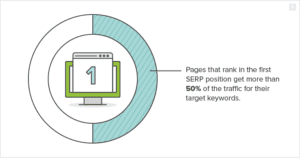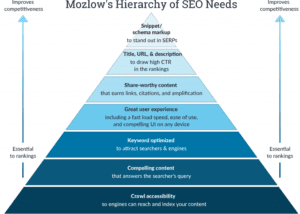Website Marketing
Creating an effective infographic for website marketing involves several key steps: Determine the specific objectives
- Define Your Goals: Determine the specific objectives you want to achieve with your website marketing efforts. Whether it’s increasing website traffic, boosting conversions, or enhancing brand awareness, clarity on goals is crucial.
- Understand Your Audience: Conduct thorough research to comprehend your target audience’s preferences, behaviors, and pain points. This insight will guide the content and design of your infographic.
- Craft Compelling Content: Develop engaging and relevant content that addresses your audience’s needs. This could include statistics, tips, or step-by-step guides related to website marketing.
- Visual Design: Create visually appealing graphics and layout that effectively communicate your message. Ensure the design aligns with your brand’s visual identity and is easy to understand at a glance.
- Distribution Strategy: Plan how and where you will share your infographic to maximize its reach. This could involve social media, email marketing, or partnering with other websites for guest posts.
- Measure and Iterate: Implement tracking mechanisms to gauge the performance of your infographic. Analyze metrics such as views, shares, and conversion rates, and use these insights to refine future marketing strategies.
- What Is Website Marketing?
- Your Website Is Your Best Marketing Tool
- How To Promote Your Website
- Building an Effective Website Marketing Strategy
- Types of Website Marketing Services
- Content and Online Marketing
What Is Website Marketing?
Website marketing encompasses the strategies and techniques employed to promote a website online, with the primary goal of increasing its visibility, attracting traffic, and driving conversions. This includes a range of activities such as search engine optimization (SEO), content marketing, email marketing, social media marketing, pay-per-click advertising, and more. The overarching aim is to enhance a website’s presence, engage with the target audience, and ultimately achieve the desired business objectives, whether that’s lead generation, product sales, or brand awareness.

Your Website Is Your Best Marketing Tool
Absolutely! A well-crafted website serves as a powerful marketing tool for businesses and individuals alike. It acts as a central hub for showcasing products, services, and brand identity. Your website can effectively communicate your value proposition, establish credibility, and engage with your target audience 24/7. It also provides a platform for various marketing strategies, including content marketing, SEO, social media integration, and lead generation. By optimizing and leveraging your website effectively, you can significantly enhance your online presence and drive business growth.
Brand Assets and eCommerce
In the context of eCommerce, brand assets play a crucial role in establishing and maintaining a strong brand presence. These assets include your logo, color palette, typography, imagery, and other visual elements that collectively form your brand’s identity. When effectively utilized in eCommerce, these assets contribute to brand recognition, trust, and loyalty, ultimately influencing purchasing decisions.
Here’s how brand assets intertwine with eCommerce:
- Branding Consistency: Maintaining consistency in brand assets across your eCommerce website, product listings, and marketing materials is essential. Consistent use of your logo, colors, and visual elements fosters recognition and trust among your customers.
- User Experience: Brand assets contribute to the overall user experience on your eCommerce platform. Well-designed assets enhance the aesthetic appeal and navigational experience, positively impacting customer engagement and retention.
- Differentiation: In a crowded eCommerce landscape, strong brand assets help differentiate your business from competitors. They convey your unique value proposition and create a memorable impression, potentially leading to repeat purchases.
- Trust and Credibility: Cohesive brand assets instill a sense of professionalism and credibility. This is vital in eCommerce, where customers may be hesitant to purchase from unfamiliar or unprofessional-looking websites.
- In summary, brand assets are pivotal in eCommerce, influencing how your brand is perceived, recognized, and trusted by customers. When effectively utilized, they can significantly impact the success of your eCommerce business.
How To Promote Your Website
Promoting your website effectively involves a multi-faceted approach. Here are some key strategies:
- Search Engine Optimization (SEO): Enhance your website’s visibility in search engine results through keyword optimization, creating high-quality content, and building backlinks from reputable sources.
- Content Marketing: Develop valuable, relevant content such as blog posts, videos, and infographics that resonate with your target audience. Share this content across various platforms to drive traffic to your website.
- Social Media Marketing: Leverage social media platforms to promote your website and engage with your audience. Share content, run targeted ads, and participate in relevant communities to drive traffic.
- Email Marketing: Build an email list and regularly send out newsletters, promotions, and updates to drive traffic back to your website.
- Pay-Per-Click (PPC) Advertising: Consider running targeted ads on search engines and social media platforms to drive immediate traffic to your website.
- Influencer Partnerships: Collaborate with influencers in your niche to reach their audience and drive traffic to your website.
- Guest Blogging and Backlinking: Contribute guest posts to reputable websites in your industry to drive traffic back to your own site.
- Engage in Online Communities: Participate in forums, Q&A sites, and other online communities where your target audience congregates, providing valuable insights and subtly promoting your website when appropriate.
- Utilize Analytics: Regularly analyze website traffic and user behavior to understand what’s working and where improvements can be made.
- By implementing a combination of these strategies, you can effectively promote your website, increase its visibility, and attract the right audience.
1. SEO
SEO, or Search Engine Optimization, is the practice of optimizing your website to increase its visibility in search engine results. This involves optimizing various elements on your website, creating high-quality content, and acquiring backlinks from other websites to improve your site’s authority and relevance. The goal is to rank higher in search results for relevant queries, thus driving organic (non-paid) traffic to your website. SEO encompasses on-page optimizations, off-page strategies, and technical enhancements to improve a website’s search engine visibility.

2. Backlinks
Backlinks, also known as inbound links or incoming links, are links from one website to a page on another website. They are crucial in search engine optimization (SEO) as they act as signals of the quality and relevance of the linked content. When a website links to your site, it is essentially vouching for the credibility and authority of your content. Quality backlinks from reputable and relevant websites can significantly impact your website’s search engine rankings. They indicate to search engines that your content is valuable and worthy of reference. However, it’s important to focus on acquiring high-quality backlinks from trustworthy sources rather than simply accumulating a large quantity of links. Quality over quantity is key when it comes to backlinks.
3. Social Media
Social media is a powerful tool for engaging with your audience, building brand awareness, and driving traffic to your website. Here are some key points about leveraging social media:
- Engagement: Use social media platforms to interact with your audience through posts, comments, and messages. Engaging content encourages sharing and can drive traffic back to your website.
- Brand Awareness: Share valuable content, updates, and promotions to increase brand visibility. Consistent and relevant posts can help establish your brand identity.
- Content Distribution: Share blog posts, videos, infographics, and other content from your website to attract visitors and encourage them to explore your site.
- Influence: Engage with influencers and industry leaders on social media to extend your reach and drive traffic to your website through their networks.
- Community Building: Create and participate in groups or communities related to your niche to foster relationships and direct members to your website.
- By effectively utilizing social media, you can create a dynamic channel for driving traffic and engaging with your audience, ultimately benefiting your website and brand.
Content Development and Publication Requires a Scientific Approach
The content you publish on your site needs to be highly relevant to your readers’ needs; it also needs to be visually interesting and easy to parse. Indeed, there are so many factors at play, and site owners need to take a scientific approach to content production and publication.
Considering 1.2% of all indexed pages are responsible for 68% of all website traffic, it should be clear why a scientific approach is necessary to attract people to your site.
The best content marketers consider many things when approaching every piece of content, including:
- Target audience: Who will get the most use out of the content? What are their pain points? Where are they in the buying process? What content formats do they prefer? What social media marketing channels do they respond to?
- Commercial goals: What conversion action should readers take? How can we measure the impact of our content?
- Keywords: Does the content use language that users actually search for? Do pages competing for similar keywords offer greater depth and breadth of subject matter expertise?
- Tone and branding: Does the content conform to the brand voice?
- Visuals: Does the imagery and typography reflect the brand? Does it align with the written content?
In addition to these considerations, content marketers also think strategically about which platforms to publish content to, what social channels to promote that content on, the best time of day to publish content and much more.
Your website is probably the most important and powerful marketing tool you have. With plenty of care and strategic thinking, it can become your biggest source of business growth. Take what you’ve learned here and put it to good use. Let us know how it goes in the comments
 Data Science in Digital Marketing Data Science in Digital Marketing: Mechanism Examples, Benefits Data Science Meets Digital Marketing Magic
Data Science in Digital Marketing Data Science in Digital Marketing: Mechanism Examples, Benefits Data Science Meets Digital Marketing Magic
